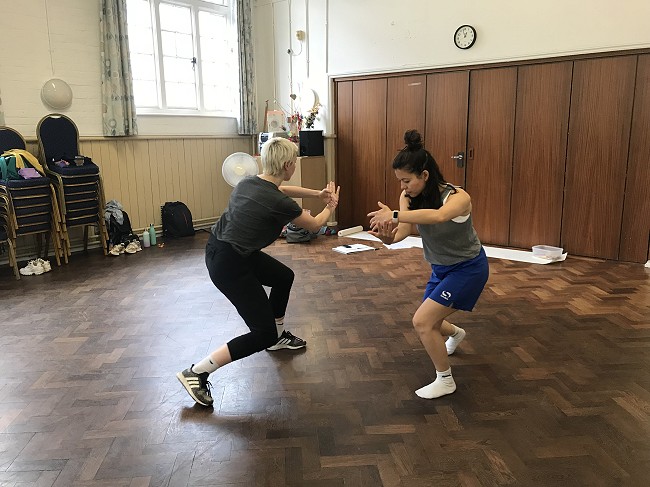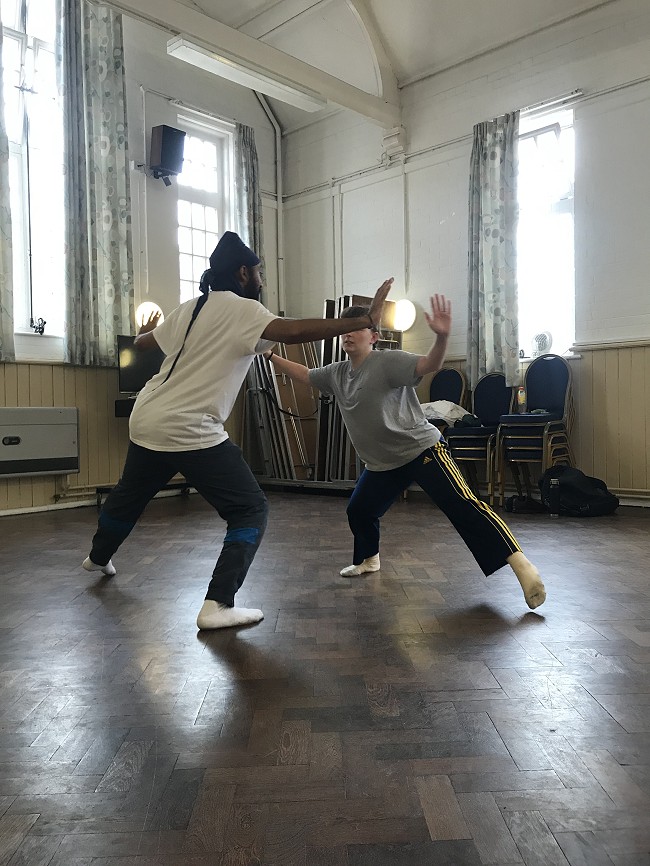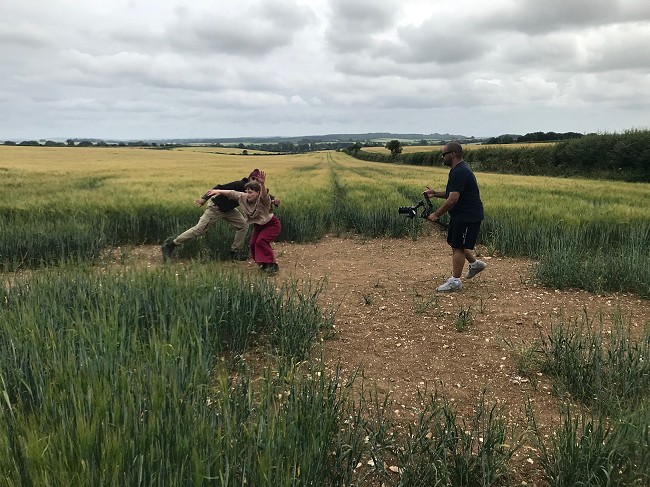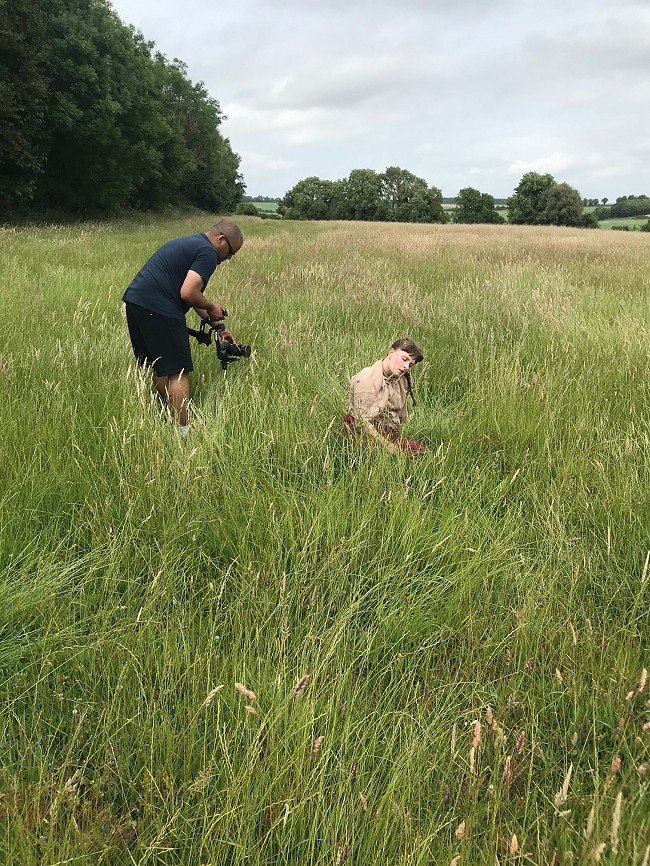
A bit more about choreography and archaeology – Katie Green
I’ve been fortunate to work collaboratively with museums, heritage sites, archives and galleries for 10 years now, bringing to life historical sites, artefacts, stories and events in new ways for new audiences, using dance, music and story-telling.
Along the way, we developed the Dancing in Caves project from 2017-18 and one of the many things this enabled me to do was to work in depth with archaeologists to find out more about the kinds of places where we were working, and how discoveries made in those caves gave us more information about the behaviours of our earliest ancestors for example. You can read more about the creative process for Beneath Our Feet here.
I’ve been wanting to take the idea of a more intensive choreography/archaeology collaboration forward for a while and so was thrilled to receive a Developing Your Creative Practice (DYCP) grant at the end of last year to invest some time in this research, which has enabled me to build a greater understanding of the archaeological process, including getting involved in a bit of digging myself!
For my research I have chosen to work with two main sites, the Durotriges Project/'Big Dig' Field School in Dorset and Holmbury Hill in the Surrey Hills, and I have been focusing on prehistory (which interests me much more because of the lack of written sources and the need to tell stories through interpreting objects and sites), and Iron Age archaeology specifically.

Collapsing time
In my work responding choreographically to heritage, and heritage sites, objects and stories, one of my main aims is to bring to life a particular object, site, story or person in a new way for a contemporary audience, most often by finding the points of personal connection (especially where those connection points can support people to reflect on their own experiences and maybe make a new discovery about their own sense of identity).
In archaeology there are so many opportunities to bring about a visceral sense of time-travelling, or ‘collapsing’ time – often thousands of years – and physically stepping into history (or prehistory) to find the place where you can feel the connection with someone who lived an unfathomably long time ago.
Lots of the archaeologists I’ve interviewed as part of the DYCP research so far talk about this - about peeling back layers of history as you slowly take back one layer of earth at a time for example. Many of the Big Dig archaeologists we spoke to in their pits told us about becoming more removed from the modern world as they dug down deeper, with the sounds and sensations of daily life becoming increasingly muffled above them.
On different visits to the Durotriges Big Dig in Dorset and to see the archive from previous years held at Bournemouth University, I have held in my hands pieces of pottery that had been worn smooth by the hands of people living more than 2000 years ago; a bone comb etched with decorative lines and a perfectly round hole pierced at one end; an impossibly fine yet still intact metal brooch.

I have seen the earth giving up secrets – through changes in colour or quality of the earth or a post hole or other feature emerging for example - of where ancient activity has taken place; where our ancestors lived, worked and generally went about their business. I have seen the landscape through their eyes.
I’m interested in using this perspective as a starting point for choreographic work because I find the experience tells me something about:
- humility – it reminds us that we are part of something so much bigger
- curiosity
- determination, ingenuity, survival
- but also about something more than survival. The act of making a mark, pressing a thumb or a nail into a pot, etching a circle or a line into a piece of animal bone, or carefully selecting a group of special objects to bury with someone for example is like branding a sense of personal or community identity on something else in the world – something you think/hope might last longer than you. It's an out-cry, like someone saying “I’m here. I matter.” If it turns out that humans are all essentially the same (even though, as archaeology shows us, customs and conventions do change over time), this act of taking care of/cherishing the quality of our experience on the planet is what becomes most important.
My 'Gathering Place' project is like a way of me saying "I hear you. Across millennia, I hear you and I’m going to carry your story forward". In this way I feel an affinity with many of the archaeologists I’ve been fortunate to interview over the past months, who have described the responsibility they feel to carry forward the stories of the past so we can learn from them now and in the future.
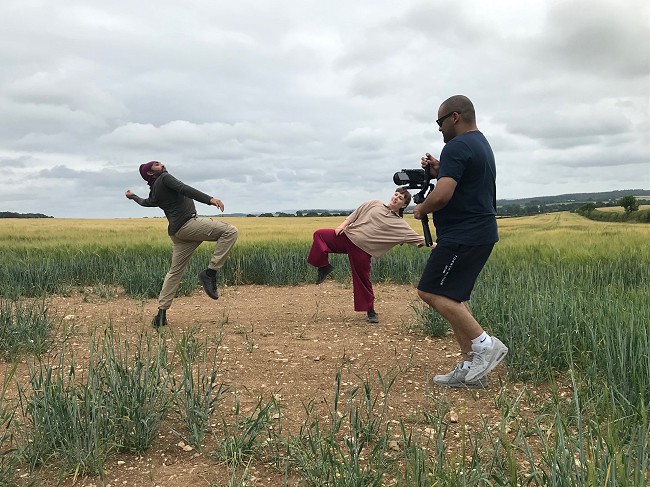
Next steps
With an initial phase of research in Dorset - in the studio, at the Durotriges Big Dig and dancing on the site of the buried Duropolis – now completed, we’re preparing to spend some time in Holmbury St Mary in the Surrey Hills, exploring ways of bringing to life/light the hidden archaeology of Holmbury Hill through a test film and performance walk.
To find out more about the research, join us at Holmbury St Mary in the Surrey Hills on the 18 July, 1.30-4pm, for a walk up to Holmbury Hill with short performances and a talk from archaeologist Judie English. Part of this year’s Festival of Archaeology, the theme for which is 'archaeology and creativity'. For more information and to book your free spot, please visit our Eventbrite page here.
Thanks so much to everyone who has been involved in the research so far -
Miles, Paul, Megan and everyone who has spoken to us and made us feel very welcome at the Durotriges Big Dig (resourced and funded by Bournemouth University); we're also very grateful to land-owner Rebecca Hill and her family for allowing us to film on-site.
To Ali Clarke from Surrey Hills Arts, Anne Sassin from Surrey Archaeological Society, archaeologist Judie English, Nikki Cowlard and everyone at the Abinger Excavation 2023 and Mark Beaumont, Hurtwood Ranger for allowing us to work at Holmbury
Dancers Alice Shepperson, Deepraj Singh, Megan Griffiths and Emily Yong. We will also be working with Ella Fleetwood and Lucy Starkey at Holmbury.
Director Daniel Martin
Writer Anna Selby
Composer Max Perryment
Dramaturg Tom Six
Archaeological illustrator Ash Thornton
Creative technologist Chris Hunt
